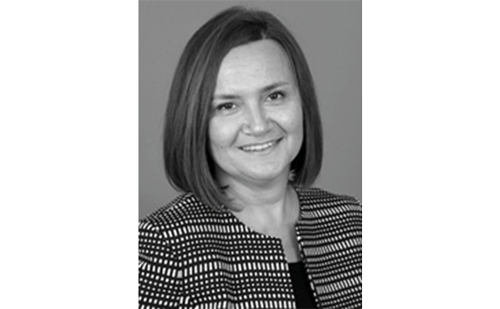For most patients, vestibular symptoms are episodic and are not continuous.The factors that precipitate symptoms may provide important clues as to the etiology of the attacks.Vertigo brought on by lying supine and turning to one side is typical of benign paroxysmal positional vertigo (BPPV). Other typical precipitating positions for BPPV include looking underneath a low object (like a sink), or reaching up to a high shelf. Lightheadedness brought on by getting up quickly from a lying or sitting position is typical of orthostatic hypotension; however, patients with BPPV may also have brief vertigo and nystagmus on sitting up quickly. Vertigo when rolling over in bed is so common in BPPV that if the patient denies it the diagnosis of BPPV is unlikely.
Definitive identification of BPPV at the bedside is of great value because it does not require further work-up such as imaging studies,1 it is not associated with central nervous system (CNS) disease,2 which reassures patients, and it can be treated quickly and effectively in the office or ER.3 The diagnosis is made by observing the characteristic nystagmus.
With the head hanging back below the supine position and turned to one side, the ampulla of the posterior semicircular canal faces directly upwards toward the otolith organs. Otoconia not firmly attached to the maculae may enter the posterior canal, eliciting vertigo and nystagmus characteristic of BPPV.The Dix–Hallpike (DH) test is a positioning maneuver intended to stimulate the vertical semicircular canals.4 With the head turned 45 degrees to one side, moving the patient from a sitting to a supine position results in rotation in the plane of the canal pair. In the normal patient, no nystagmus occurs following this maneuver. In patients with BPPV, when the affected ear is undermost, mixed torsional and vertical nystagmus is seen typically after a short latency. The upper pole of the eye beats toward the undermost ear and there is an upbeating component. This nystagmus decays (habituates) in less than a minute and typically in less than 15 seconds. CNS lesions may result in nystagmus with little or no latency in the DH maneuver.This nystagmus may not habituate and lasts as long as the patient’s head is hanging back.
The leading theory of the cause of BPPV is that it is caused by free-floating debris in the semicircular canals.1,2 Barany 3 and then Dix and Hallpike 4 noted that repeated provocative maneuvers carried out in a short period of time result in a diminished response (fatigability). Epley explained fatigability along with other key features of BPPV with the theory of debris particles forming a ‘leaky piston’ that displaces endolymph as it is pulled by gravity.5,6 He postulated that with repeated head movements the particles tend to disperse.That model correlates with the observation that as the day progresses and patients make repeated head movements, symptoms decrease.7,8 This suggests that the DH maneuver would be less likely to be positive later in the day, making its reliability dependant on the time of day.To investigate whether time of day affects the outcome of the DH maneuver, a chart review was performed of all the electronystagmograms (ENGs) performed at the JFK Medical Center during a 25-month period starting in January 2001, in which the result and time of day of the test were noted.
Methods
Audiologists took histories and performed and analyzed the ENGs. An otoneurologist reviewed the results. For the purpose of this study, the history was considered consistent with BPPV if it included ‘dizziness’ induced by head movements with respect to gravity. Dizziness was not further defined. ENGs were performed using video-oculography recording horizontal and vertical eye movements. A DH was considered positive if it induced up-beating nystagmus after the maneuver and the nystagmus decayed in less than 30 seconds. If the patient refused the DH, the test was termed ‘not completed’. Test time was determined by adding 45 minutes to the appointment time and then rounding up to the nearest hour.
Results
Of 1,363 records reviewed, 43 were excluded because the time of day that the DH was performed was in question. Of those, one DH was positive and four were not completed. In addition, 105 were excluded because the DH was not completed, leaving 1,220 records.
Table 1 shows statistics for four sometimes overlapping groups:
- records with a positive DH;
- records with tests that were not completed;
- records with a positive history; and
- all records (those remaining after exclusions).
For each group, the number of tests performed during each hour of the day was ascertained and divided by the total number of tests for that group, producing a timebased distribution. A correlation coefficient was calculated between the distributions of each of the first three groups and group four. All correlations were highly statistically significant.
Only two records that had a positive DH had a negative history; therefore, the simple history of non-specific head movement inducing non-specific dizziness was 98% sensitive (though only 15% specific (91/589)).
Discussion
The authors’ results indicate that time of day does not influence the diagnostic accuracy of the DH. It is acknowledged that this study was retrospective and that testing time was not randomized. Patients were allowed to choose appointment time from available openings and it is possible that patients with BPPV may have avoided earlier appointments because they tended to feel unwell at those times, thus skewing the results. However, the converse could be true; patients may have scheduled their ENG at the time they believe the results would most likely be diagnostic and therefore helpful to them. Nevertheless, the data show that the time of the day the DH was performed did not influence the results of the maneuver.This suggests that while patients report more symptoms in the morning, ENGs and bedside examinations using the DH can be scheduled in the afternoon without jeopardizing results. An explanation for the discrepancy between the time dependency for symptoms and the lack of time dependency for the DH maneuver may be that the DH maneuver is a stronger stimulus than the movements of daily activity.The DH maneuver may therefore evoke a response in an otherwise asymptomatic patient.
Acknowledgement National Institutes of Health (NIH) National Institute on Deafness and Other Communication Disorders (NIDCD) grant R03 DC005374-01A1













